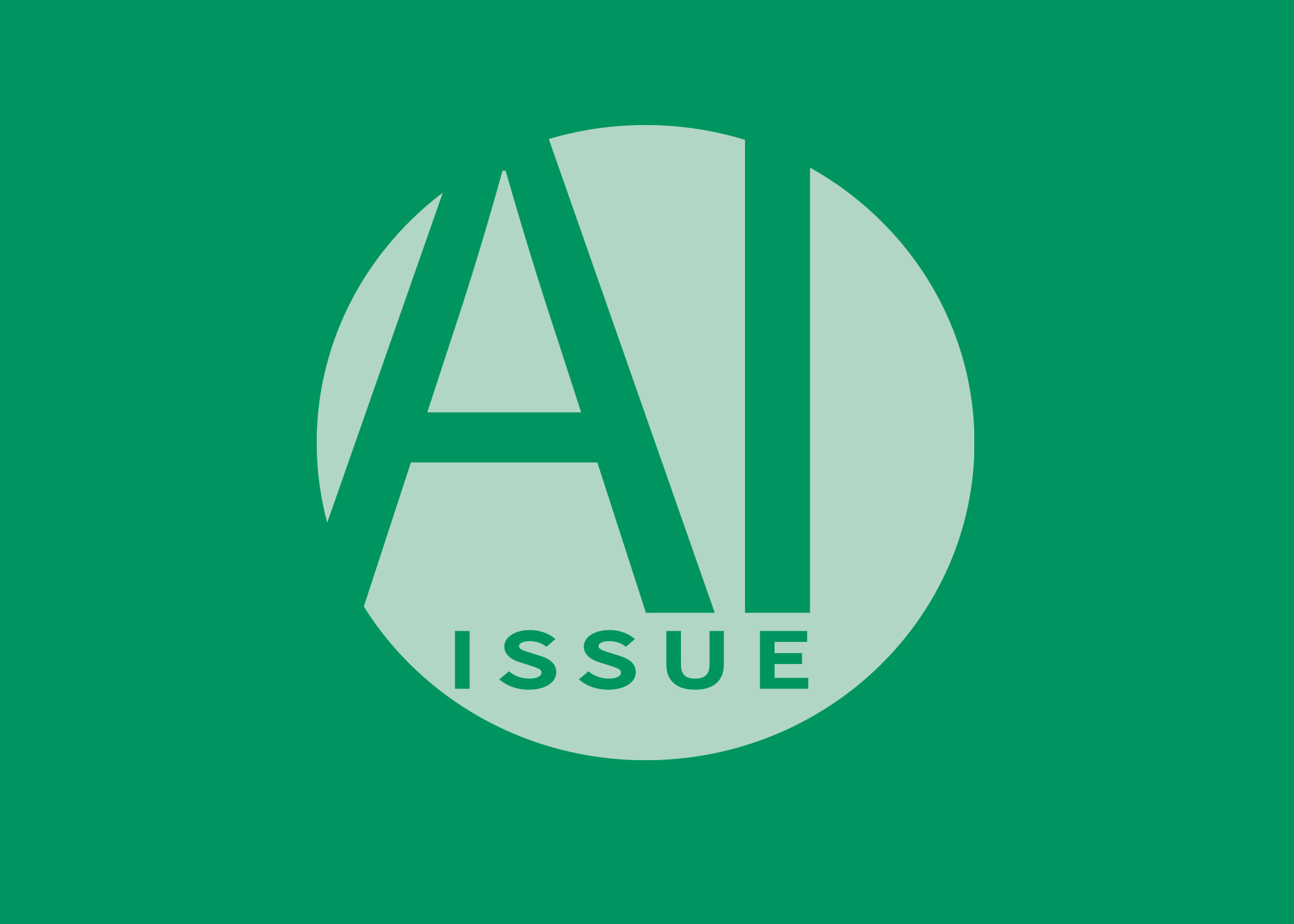
9 minute read
Unlocking the Future of Dentistry
Unlocking the Future of Dentistry
A Summary of AI and Augmented Intelligence in Dentistry from ADA’s White Paper
Kenneth W. Aschheim, D.D.S.; ChatGPT, AI-Language Model by OpenAI
ABSTRACT
The best way to explain the potential of artificial intelligence (AI) is to put it in action. More than 50 percent of this paper was produced by ChatGPT and is presented here unedited or altered in any way.
Artificial intelligence is the current hot topic in technology, sparking excitement and concern across countless industries. In response to the growing interest and significance of artificial intelligence (AI) and augmented intelligence (AuI) in dentistry, the American Dental Association (ADA) has authored a comprehensive white paper, hoping to educate the profession on the topic and predicate the transformative potential within the dental profession.
Titled “ADA SCDI White Paper No. 1106 for Dentistry: An In-Depth Exploration of Artificial and Augmented Intelligence Applications in Dentistry,” this document discusses how AI and AuI are being integrated into various clinical domains, encompassing areas such as preventive care, caries and periodontal disease management, dental implants, oral and maxillofacial surgery, endodontics, imaging, orthodontics and more.
AI and AuI refer to the field of computer science focused on creating systems that can perform tasks that were believed to require human intelligence, such as problemsolving, pattern recognition and decision-making. Within AI, machine learning is a subset that emphasizes the development of algorithms and models that allow computers to learn from data and improve their performance over time without being explicitly programmed.
Neural networks are computer models that attempt to digitally represent the human brain’s interconnected neurons. These networks consist of “artificial neurons,” through which data is processed, typically consisting of an input layer, one or more hidden layers, and an output layer. Deep learning, a subfield of machine learning, utilizes neural networks with multiple layers (deep neural networks) to automatically extract features from data, making it exceptionally well-suited for tasks like image and speech recognition.
Finally, to illustrate the power of current AI and AuI software, ChatGPT, an AI language model developed by OpenAI, authored the white paper summary for this article. It has not been edited or altered in any way by human authors. The fact that the AI produced a coherent and informative summary underscores the strength and capabilities of natural language processing and AI technologies. However, it is essential to acknowledge that AI systems have limitations and may not always be entirely accurate or error-free. Human oversight and critical evaluation remain crucial to ensure the reliability and quality of information derived from AI-generated content.
The progress in AI has undoubtedly opened new avenues for research, communication and problem-solving, but it is essential to use such technologies responsibly and ethically in various domains.
Software such as ChatGPT is poised to revolutionize dentistry by providing efficient, accurate and up-to-date information to dental professionals, enabling better patient care and innovative research. The New York State Dental Association Information Technology Committee commits to staying at the forefront of AI advancements, ensuring that dentists and healthcare practitioners are informed about the latest developments and opportunities in AI implementation to advance dental practices.
From the AI Pen
The text that follows is entirely AI-generated and is presented to highlight its capabilities, tone and the grammatical syntax of AI-generated content. The text that follows has intentionally not undergone human editing.
The white paper by the ADA Standards Committee on Dental Informatics delves into the growing use of Artificial Intelligence (AI) and Augmented Intelligence (AuI) in dentistry. It discusses how AI/AuI systems, such as machine learning and deep learning, are being applied in various dental disciplines, including prevention, implants, surgery, orthodontics and more. Additionally, the paper addresses the need for enhanced electronic dental record systems to fully leverage AI/AuI capabilities and highlights nonclinical aspects, such as payor topics and regulatory considerations. Two appendices provide further insights into imaging algorithms and FDA guidelines for AI and machine-learning practices.
The American Dental Association Standards Committee on Dental Informatics White Paper No. 1106 provides an overview of the use of Artificial Intelligence (AI) and Augmented Intelligence (AuI) in dentistry. The paper covers various clinical disciplines, including prevention, caries and periodontal disease, implants, oral and maxillofacial surgery, endodontics, prosthetics, dent maxillofacial imaging, orthodontics, temporomandibular joint disorder, and sleep disorders. It also includes information on non-clinical areas like claims processing, payment integrity, quality assurance, and dental practice administrative issues.
The paper defines key terms such as AI, AuI, Clinical Decision Support (CDS), and Machine Learning (ML). It explains the importance of training, validation, and testing datasets for AI models and the concept of ground truth in supervised learning.
In terms of clinical applications, the paper discusses how AI/AuI is used for dental anatomy identification, caries detection, periodontics, dental implant recognition and prognosis, oral and maxillofacial surgery diagnosis and treatment planning, and endodontic diagnostic support. AI/AuI tools have shown promising results in assisting clinicians in these areas, providing accurate diagnoses, predicting treatment outcomes, and improving patient care.
The use of AI/AuI in dentistry has the potential to enhance early intervention and preventative treatment, improve caries detection, increase accuracy in periodontal diagnosis, aid in dental implant recognition and success prediction, assist in oral and maxillofacial surgery planning, and support endodontic diagnosis and treatment planning. Overall, the paper highlights the positive impact of AI/AuI in various aspects of dental care and encourages further research and development in this field.
The use of AI/AuI technology in dentistry has shown promising results in various areas. In endodontics, it has demonstrated accurate diagnosis of vertical root fractures (VRFs) in treated and intact teeth, as well as differentiation of single vs. multiple roots in lower mandibular molars. AI/ AuI has also been used to accurately determine the minor apical constriction and aid in pre-treatment planning.
In dental prosthetics, AI/AuI technology has been widely adopted in designing final restorations, surgical guides, and occlusal guards. It has also been utilized in case scoring, routing, and automated margin marking in dental laboratories, improving efficiency and patient outcomes.
In dental radiology and imaging, AI/AuI algorithms have been applied for clinical data-driven decision trees, disease identification, radiologic finding interpretation, and image enhancement. These technologies have the potential to enhance diagnostic accuracy and therapeutic response prediction.
In orthodontics, AI/AuI has been used for growth assessment, facial analysis, diagnostic accuracy improvement, case design, and treatment planning. It has also shown promise in improving tracing accuracy in lateral cephalometric images.
In the treatment of temporomandibular joint disorder (TMD), AI/AuI-assisted imaging has been used for accurate prediction of internal derangements. AI/AuI-based nightguard design associated with intraoral scanning has simplified and standardized the production process.
For sleep disorders, AI/AuI technologies coupled with imaging help identify airway obstructions and classify obstructive sleep apnea (OSA). They have potential applications in risk identification, remote monitoring, and personalized treatment paths.
Teledentistry, with the aid of AI/AuI, allows for precision dentistry by providing tailored treatment plans and therapies based on integrated and analyzed information. AI can interpret images, improve image quality, and assist clinicians in diagnosing oral diseases and providing timely feedback during remote consultations.
Overall, the incorporation of AI/AuI technology in dentistry has the potential to improve accuracy, efficiency, and patient care in various clinical and non-clinical aspects of dental practice.
AI/AuI technology is being increasingly utilized in various aspects of dental care, including consultation, triage, diagnosis, monitoring, electronic dental records (EDR), data collection and repository, treatment planning, risk assessment, scanning, workflow optimization, and non-clinical dental environment such as payor claim processing, payment integrity, and quality assurance.
In consultation and triage, AI/AuI aids clinicians in making preliminary diagnoses and treatment plans based on screening questionnaires, EHR/EDR, and images. It can also help in monitoring patient compliance and treatment progress remotely.
EDR plays a crucial role in storing and integrating patient data and images, making it an ideal platform for AI/ AuI-powered tools. AI/AuI can analyze data in EDR to facilitate clinical decision-making, risk assessment, and treatment planning.
Scanning and imaging have also seen significant advancements with the integration of AI/AuI technology. It can help in identifying potential errors in scanned images, identifying anatomic structures, and facilitating digital workflows for treatment planning and fabrication of dental devices.
The use of AI/AuI has various potential benefits for patients, including improved communication, visualization, trust in the diagnostic process, and enhanced precision and early intervention in dental care.
In the non-clinical dental environment, AI/AuI systems are being utilized by payors for claim processing, payment integrity, and quality assurance. AI/AuI can validate attachments in claims, screen radiographic images to meet clinical guidelines, detect potential fraud, waste, and abuse, and prioritize claims for review, making the overall review process more efficient.
However, there are limitations and challenges associated with AI/AuI in dentistry, including concerns about data quality, technical expertise, and the need for further studies and regulations to ensure validity and reliability.
Overall, AI/AuI technology holds great promise in dentistry, improving workflow, patient benefits, and the quality of care provided by dental professionals. However, careful consideration of benefits and risks and adherence to regulatory guidelines are essential for its successful integration into dental practices.
The U.S. regulatory landscape for AI/AuI in dental imaging and other dental applications involves the Food and Drug Administration (FDA). The FDA requires validated clinical associations between the outputs of AI/AuI systems and specific clinical conditions. The data used for decision support must be validated, private, and secure. The FDA classifies AI/AuI devices based on risk, with Class I being the lowest risk and Class III being the highest. Class I devices may be exempt from pre-market notification and current Good Manufacturing Practices (cGMP). Class II and Class III devices have specific labeling and manufacturing requirements.
The paper concludes that AI/AuI has the potential to significantly impact dentistry, with changes already being seen in areas such as caries and bone loss analysis, robotic implant placement, and prosthetic design. The contributors to the paper believe that AI/AuI will transform how dental care is delivered in the future.
Queries about this article can be sent to Dr. Aschheim at DrAschheim@dental-nyc.com.

Kenneth W. Aschheim, D.D.S., is adjunct clinical professor at New York University College of Dentistry, New York, NY, and associate clinical professor at Mount Sinai School of Medicine, New York, NY. He is a member of the New York State Dental Association Information Technology Committee and vice chair of the ADA Standards Committee on Dental Products.










